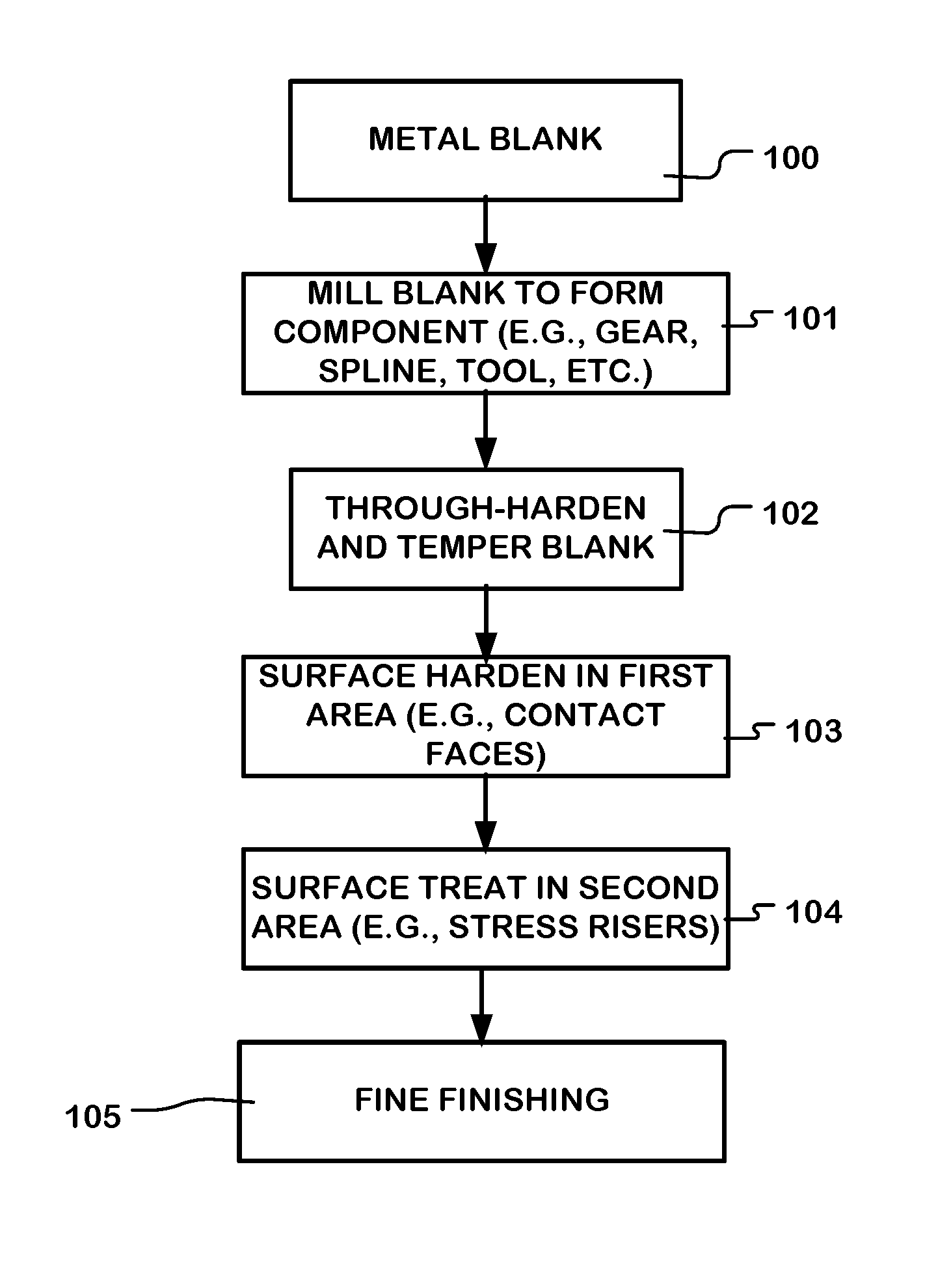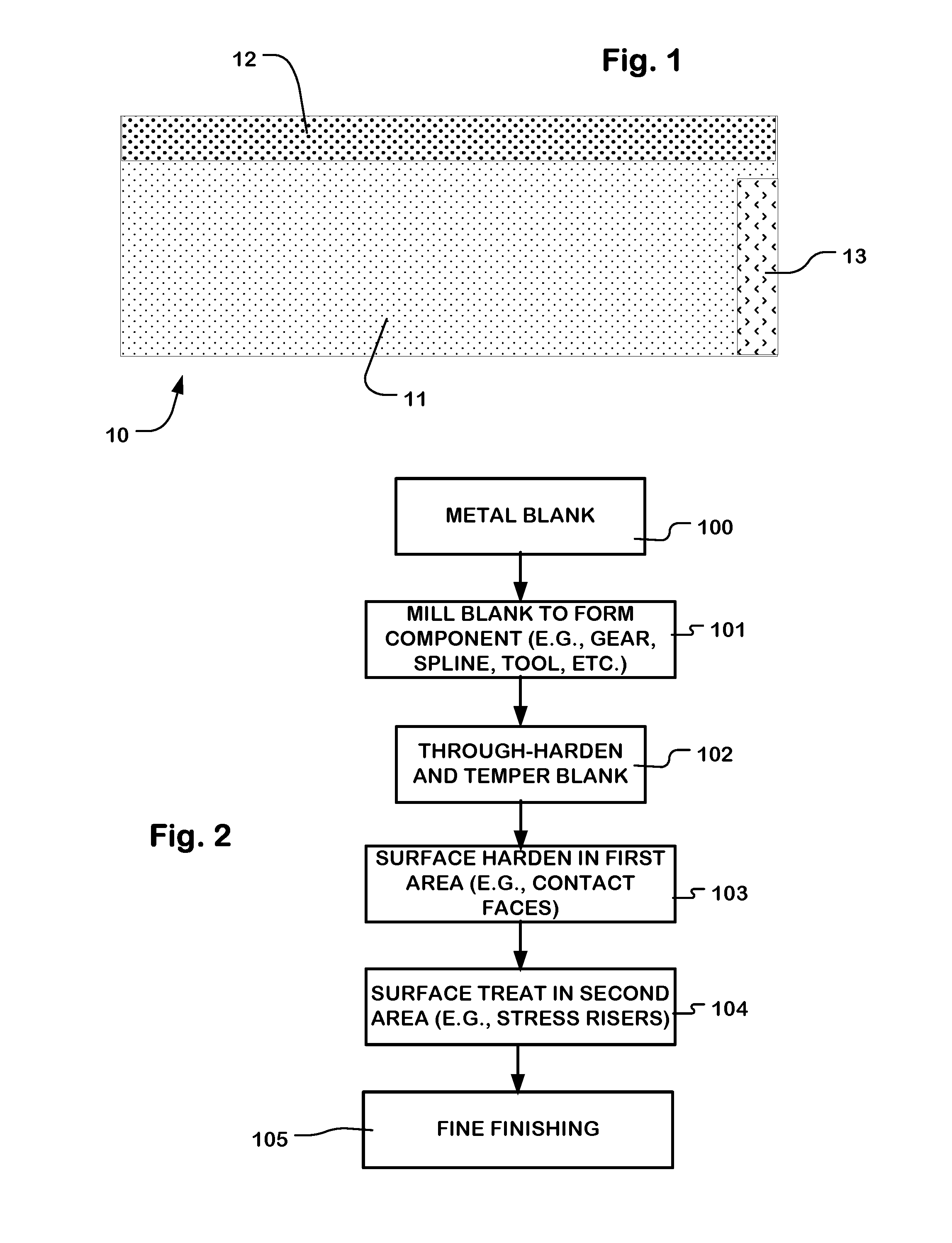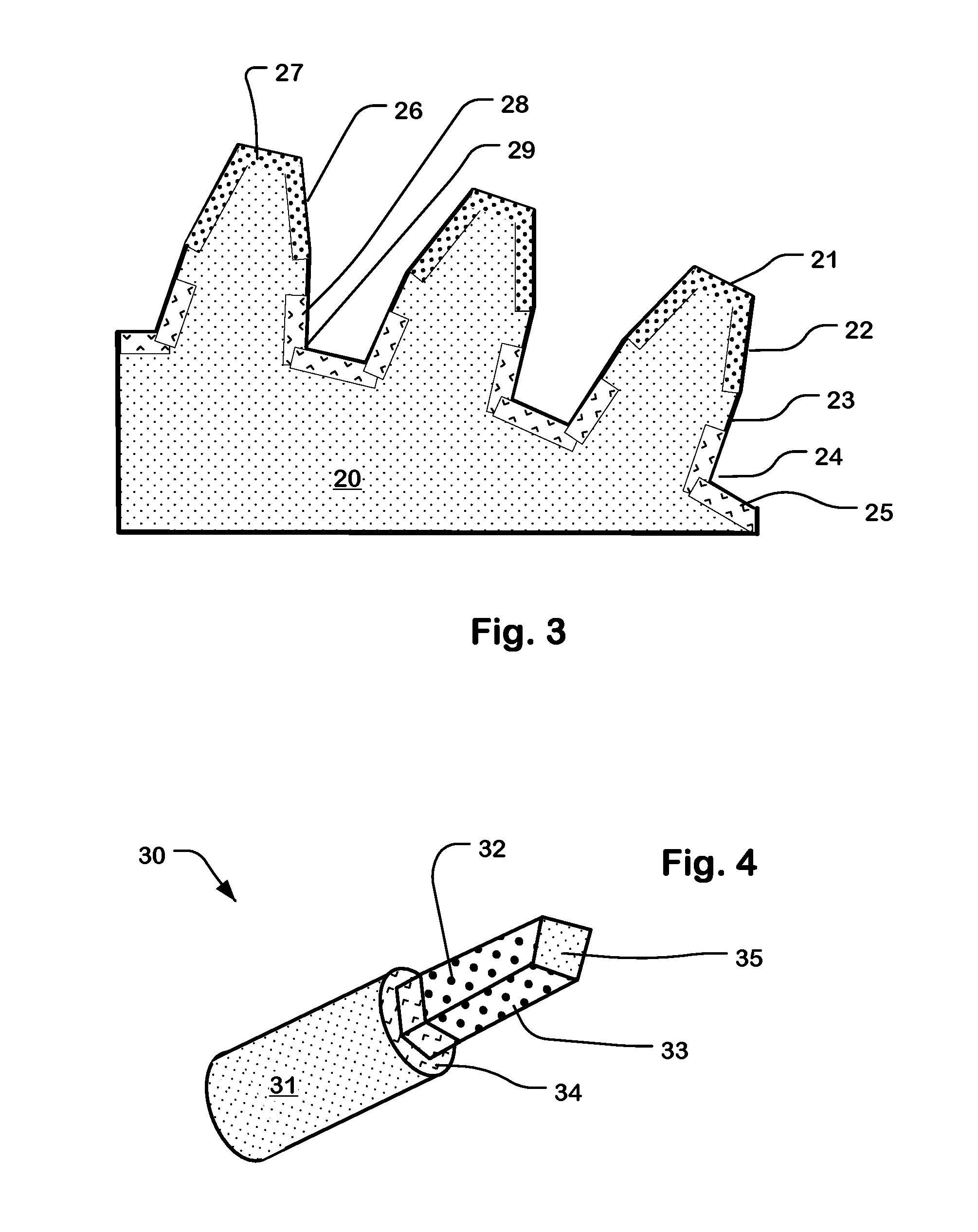High fatigue strength components requiring areas of high hardness
a technology of fatigue strength and components, applied in the field of high fatigue strength components, can solve the problems of limiting or compromising the fatigue strength of such components, affecting the hardness of the area on each gear tooth, and affecting the hardness of wear-resistant components, etc., and achieves the effect of high fatigue strength and high hardness for wear
- Summary
- Abstract
- Description
- Claims
- Application Information
AI Technical Summary
Benefits of technology
Problems solved by technology
Method used
Image
Examples
Embodiment Construction
[0026]A detailed description of embodiments of the technology is provided with reference to the FIGS. 1-7.
[0027]FIG. 1 is a simplified diagram of a metal component 10 including a component core 11 which comprises a metal, such as steel, titanium and titanium alloys, aluminum and aluminum alloys, nickel based alloys and so on. The material of the core 11 can be brought to a desired level of hardness as discussed below. The component 10 has a surface hardened, first surface layer 12 in a first area on the surface of the component, and a surface compressive-stress treated, second surface layer 13 in a second area. The second surface layer has residual compressive stress different than the first surface layer, and has hardness different than the first surface layer.
[0028]The component 10 in some embodiments can have a relatively hard core material such as tool steel, which can be made relatively hard. Tool steel is a variety of carbon and alloy steels well-suited to be made into tools. ...
PUM
| Property | Measurement | Unit |
|---|---|---|
| fatigue strength | aaaaa | aaaaa |
| fatigue strength | aaaaa | aaaaa |
| tensile strength | aaaaa | aaaaa |
Abstract
Description
Claims
Application Information
 Login to View More
Login to View More - R&D
- Intellectual Property
- Life Sciences
- Materials
- Tech Scout
- Unparalleled Data Quality
- Higher Quality Content
- 60% Fewer Hallucinations
Browse by: Latest US Patents, China's latest patents, Technical Efficacy Thesaurus, Application Domain, Technology Topic, Popular Technical Reports.
© 2025 PatSnap. All rights reserved.Legal|Privacy policy|Modern Slavery Act Transparency Statement|Sitemap|About US| Contact US: help@patsnap.com



